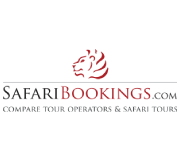The iconic Mount Kilimanjaro, standing at an unparalleled height of 19,341 feet, is the highest peak on the African continent and one of the world’s Seven Summits. This dormant volcanic mountain looms majestically over Tanzania’s Northern Circuit, providing not only a dramatic backdrop to the country’s wildlife-rich savannahs but also an irresistible allure to adventurous travelers from across the globe.
To conquer the summit of Mount Kilimanjaro is to test the boundaries of one’s physical and mental endurance while etching memories that linger a lifetime. Bushman Safaris, your expert guide to East Africa’s gems, is eager to help you unlock the secrets of this breathtaking mountain as you embark on an odyssey to the Roof of Africa.
As the highest free-standing mountain in the world, Mount Kilimanjaro presents an array of scenic routes that lead to its summit. With trails that cater to different abilities and preferences, every trekker can find the perfect path to match their experience and skill level. The mountain’s diverse ecosystems, ranging from equatorial rainforests to alpine deserts, provide a stunning canvas of nature’s magnificence, offering trekkers the chance to encounter a variety of flora and fauna unique to the region. Enrich your journey with insights into the mountain’s fascinating geology, history, and local culture, as you take on the challenge with the help of experienced and passionate guides.
Exploring the Scenic Routes of Mount Kilimanjaro
Each trail on Mount Kilimanjaro offers its unique blend of challenges, diverse landscapes, and experiences. To begin your journey, consider the details of popular routes that lead to the summit:
Machame Route: Also known as the “Whiskey Route,” the Machame Route is considered one of the most beautiful paths to Kilimanjaro’s summit. This popular route takes trekkers through lush rainforests, scenic moorlands, and high-altitude alpine deserts before the final push to Uhuru Peak. With an approximate duration of 6-7 days, the Machame Route offers excellent acclimatization opportunities, increasing your chances of success.
Marangu Route: Dubbed the “Coca-Cola Route,” the Marangu Route remains the oldest and most established trail on Kilimanjaro. Trekkers typically complete this route in 5-6 days, covering an array of terrain, including montane forest, alpine desert, and alpine tundra. The Marangu Route is unique for its hut accommodation, which provides shelter from the elements and a chance to socialize with other climbers.
Lemma Route: For those seeking solitude and a more challenging endeavor, the Lemma Route offers a longer and more remote path to the summit. Taking 8-9 days, this pristine route begins from the north and traverses remote wilderness teeming with exotic flora and fauna. The Lemma Route is ideal for experienced trekkers seeking an off-the-beaten-path experience.
Rongai Route: The Rongai Route approaches Kilimanjaro from the northeastern side, making it relatively drier than other routes. Ranging from 6-7 days, this tranquil and remote route offers stunning views and a leisurely trek through varied landscapes, culminating in the final ascent to Uhuru Peak.
Encountering Kilimanjaro’s Unique Flora and Fauna
As you journey through Mount Kilimanjaro’s incredible landscapes, you’ll have the opportunity to encounter the mountain’s rich biodiversity:
Equatorial Rainforest: A lush montage of towering trees, verdant ferns, and vibrant flowers, the rainforests at the base of Kilimanjaro are home to diverse species, such as tree hyraxes, blue monkeys, and black-and-white colobus monkeys. Bird enthusiasts may also spot Hartlaub’s turaco, silvery-cheeked hornbills, and countless other avian species.
Heather and Moorland: Ascending above the treeline, climbers enter an otherworldly landscape of heaths and moorlands filled with giant lobelias, groundsel plants, and tussock grasses. Look out for unique bird species such as the Kilimanjaro white-eye, scarlet-tufted malachite sunbird, and mountain buzzards.
Alpine Desert and Summit: The alpine desert, characterized by sparse vegetation and extreme temperatures, shelters unique adaptations like lichens and high-altitude mosses. Amidst stark volcanic rock formations, you may also spot unique reptiles and hardy bird species such as white-necked ravens.
Preparing for Your Kilimanjaro Trek: Tips for Success
Proper preparation is crucial to maximize your chances of reaching the summit and having a safe, enjoyable trek:
Physical Fitness: Begin a conditioning program at least two months before your climb, focusing on cardiovascular exercises, strength training, and high-altitude hiking, if possible.
Acclimatization: The primary challenge on Kilimanjaro is acclimatization. Select a route with enough time for acclimatization, and practice “climb high, sleep low” to minimize the risk of altitude sickness.
Gear and Clothing: Invest in high-quality equipment, such as moisture-wicking layers, durable rain gear, UV-protection sunglasses, and a robust daypack. Rent specialized items like gaiters, trekking poles, and mountaineering boots if needed.
Food and Hydration: Proper nutrition and hydration are critical for a successful Kilimanjaro trek. Consult your guide on meal planning and ensure you consume adequate water, aiming for three to four liters daily.
Final Thoughts
Tackling Mount Kilimanjaro is more than a mere climb; it’s a journey into the heart of Africa’s captivating natural wonder. With diverse trails, breathtaking flora and fauna, and a once-in-a-lifetime experience awaiting the summit, let Bushman Safaris serve as your expert guide to unlock the magic and grandeur of Tanzania’s iconic peak.
Whether you’re a seasoned mountaineer or trekking enthusiast, take the first step toward conquering the Roof of Africa and etch memories that last a lifetime. Contact us today for more information on touring our Africa and Uganda historical landmarks!









